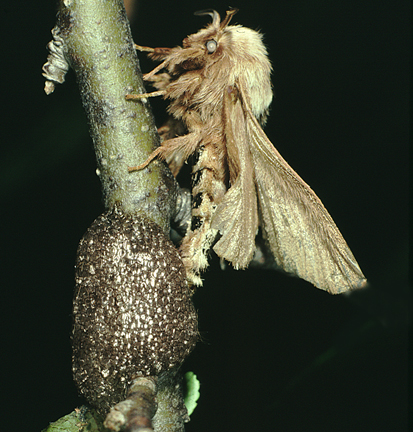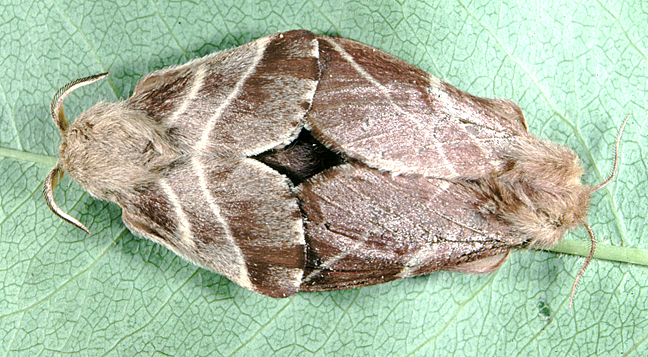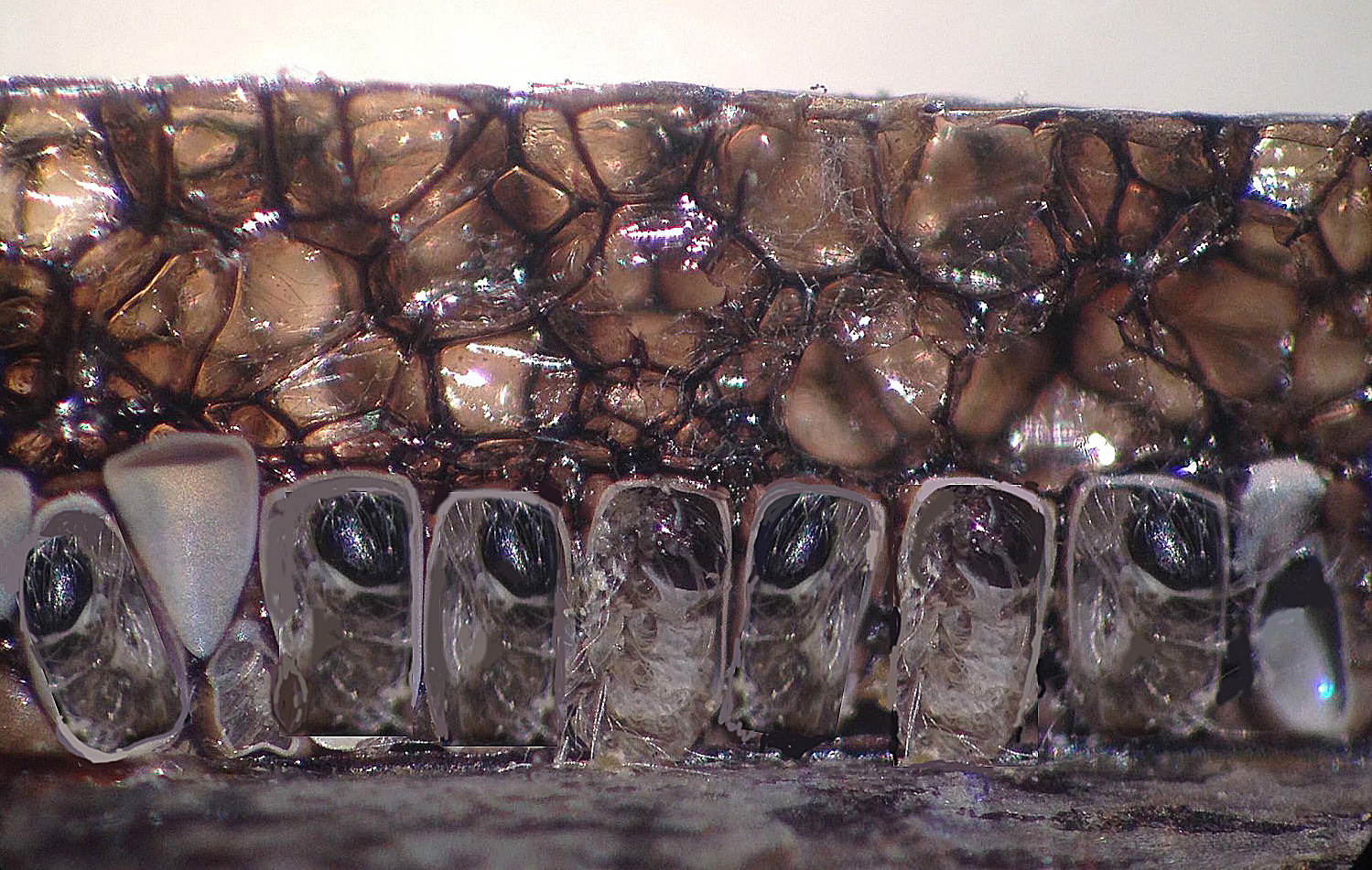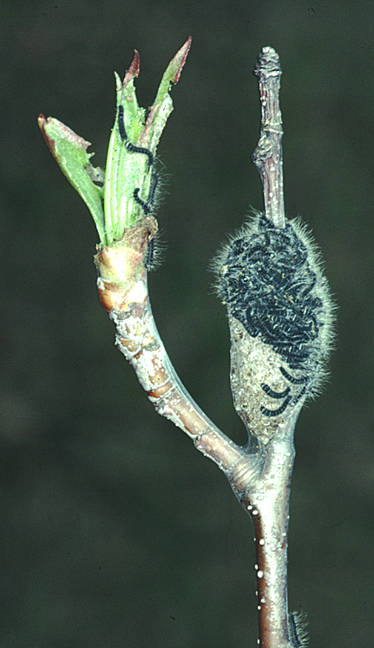The adult moth sets the stage for sociality by laying 200-300 eggs in a single egg mass in late June. The eggs are covered with a frothy material called spumaline that the moth secretes as she oviposits. The spumaline is hydroscopic, allowing it to absorb rainwater which protects the eggs from dessicating. The spumaline also protects the small caterpillars that soon develop within the eggs from parasitoid wasps that would otherwise attack the imprisioned caterpillars. Time-lapse video.
Embryogenesis proceeds rapidly and some three weeks after the eggs are laid fully formed caterpillars can be found sequestered within their egg shells, deep underneath the protective layer of spumaline. The tiny caterpillars lie quiescent until the following spring, then chew their way through the shells of their eggs just as the buds of the host tree begin to expand.
The caterpillars emerge in unison by chewing through the caps of their eggs. Time-lapse video.
The newly elosed female attracts a male to her by secreting a pheromone from the tip of her abdomen, usually on the same day that she emerges from her cocoon.
Setting the stage for sociality - the moth and oviposition
The moths eclose from their cocoons in June. After expanding her wings (time-lapse) the female typically stays near the cocoon and calls for males.
The spumaline exposed to the elements for nine months often erodes, exposing the eggs stacked together underneath.
The egg mass as it appears in late summer and winter. The small caterpillars that lie within do not emerge until the following spring some nine months after the eggs are laid.






